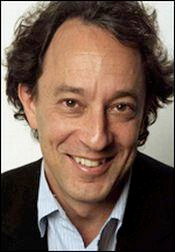The Arts Section of today’s Times leads with a gorgeous meditation on cycling in New York that is so unabashedly positive, it’ll take your breath away. At least it took mine. In my 50 years as a Times reader -- nearly 40 of them as a daily bicycle rider -- I can’t recall any essay on cycling as the quintessential urban experience as lyrical and unapologetic as this one.
For once in a Times story on bicycling, there’s no fear-mongering about lawless bikers or hand-wringing about misused street space. That’s partly because the article is rendered as criticism rather than reportage and thus doesn’t require “balance.” But mostly it’s because the writer, Michael Kimmelman, formerly the Times’ chief art critic and, as of July, its architecture critic and senior critic to boot, clearly wouldn’t stand for it.
“New Yorkers should love bicycling,” Kimmelman begins. At the conclusion of the piece, he writes: “This [cycling] was the only way to travel.” Between these bookends is an autumn day spent riding from the West Side on the Hudson River Greenway, through Midtown to the Lower East Side, over the Williamsburg Bridge, along the Brooklyn waterfront, back to Manhattan by ferry, up First Avenue, to and through Central Park and then home, with abundant pauses to eat, converse, consider, and, yes, stop at red lights.
Much of the ride is in the company of Janette Sadik-Khan. Mercifully, the DOT Commissioner isn’t likened to Robert Moses or Jane Jacobs but is allowed to be herself: “a keen bicycler… the driving force behind the city’s new bike lanes and now also a piñata for their vocal opponents.” Opponents whom Kimmelman rebukes for their myopia even as he invites them to join him:
It’s too bad that so many New Yorkers still complain about the bike lanes’ contribution to the inconvenience of urban driving instead of promoting them for their obvious role in helping solve the city’s transportation miseries, and for their aesthetic possibilities. I don’t mean they’re great to look at. I mean that for users they offer a different way of taking in the city.
That passage conveys a lot: not just that it’s time for “Neighbors for Better Bike Lanes” and their tabloid enablers to get off Sadik-Khan’s back and get a life -- or, better, a bike -- but that there’s a new voice at the Times’ bully pulpit: one for whom architecture isn’t just buildings but is the fabric in which structures, spaces and society intersect and interact.
In recent columns, Kimmelman has extolled “the power of place” in fostering political protest from Tahrir Square to Zuccotti Park, and has written of the value of melding green design with quality architecture in public housing in the Bronx. In his piece today, Kimmelman plants his critic’s flag squarely amidst New York’s contested streets, and states openly that bicycling is “a no-brainer” -- not just “for the obvious health and environmental reasons and also because cycling can be the swiftest way to get around,” but because bicycling lends our city “civic diversity.”
“Great cities offer up as one of their distinguishing virtues [a] combination of serendipity and complexity,” Kimmelman writes. Accordingly, he doesn’t sugarcoat cycling’s pitfalls, but recalls “plenty of accidents over the years… crashing into double-parked cars, abruptly opened taxi doors and reckless riders,” and grumbles about the traffic-blocked bike lanes and “crosstown madness [that left him] cursing the downsides of cycling.” But even that, he implies, is a price worth paying to find “New York unspooled as a series of surprises.” Cycling “provide[s] a natural mix of intimacy and distance. On a bike, the city shrinks.“
Kimmelman does hit a bump, attributing to Jacobs rather than the mid-century urban thinker Lewis Mumford the crucial insight that “new highways only create more traffic as cars multiply to meet increased capacity.” No matter, it’s grand seeing Moses’ obsessive program of more and wider highways exposed as magical building; hearing Sadik-Khan describe the concept of safety-in-numbers for cyclists as an “architecture of safety”; having Kimmelman himself proclaim that “the bike lanes are about urban livability and about encouraging the sort of street culture that, as Jacobs reminded us, a healthy and democratic city depends on“; and reading his shout-out to London’s “traffic-congestion fee program for drivers of the sort that New York was wrong to reject.”
I’m probably making too much of Kimmelman’s essay. One article, even in the Times, doesn’t a revolution make, and the enemies of livable streets will probably ignore it anyway. Take it, then, as a harbinger of the livable streets revolution that, though fitful, is now firmly underway.






